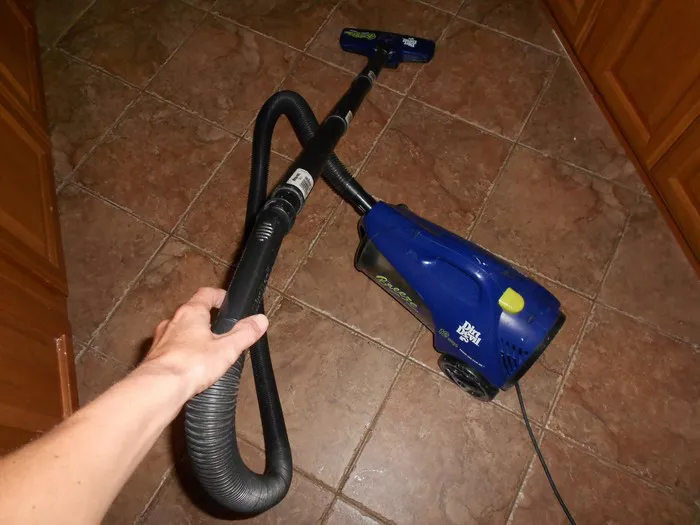Suction is the lifeblood of a vacuum cleaner. It’s the force that lifts dirt, dust, and debris off your floors and into the dustbin or bag. However, many users experience the frustration of their once-powerful vacuum cleaner losing suction over time. This can leave you feeling like you’re constantly pushing the machine around, but achieving lackluster cleaning results.
This guide will help you troubleshoot the most common culprits behind weak suction in your vacuum cleaner and get it back to fighting dirt with peak performance.
Common Causes of Reduced Suction
Several issues can hinder your vacuum cleaner’s ability to create a strong seal and efficient airflow, leading to weak suction. Here are some of the most common causes to check:
Clogged Filters: Your vacuum cleaner relies on filters to trap dust and debris while allowing clean air to flow back into the room. However, over time, these filters can become clogged with dirt and hair, restricting airflow and significantly reducing suction power.
See also: The Dustbin Capacity in Vacuums
There are typically three types of filters in a vacuum cleaner:
1. HEPA Filter: This highly efficient filter captures very small particles like allergens and pet dander. Depending on the manufacturer’s instructions, HEPA filters may need to be replaced periodically.
2. Foam Filter: This pre-filter traps larger debris before it reaches the HEPA filter. Foam filters can usually be washed and reused.
3. Exhaust Filter: This filter sits near the exhaust vent and helps prevent dust from escaping back into the room. Exhaust filters may be washable or disposable, depending on the model.
Always refer to your vacuum cleaner’s user manual for specific instructions on cleaning or replacing your filters. Improper cleaning can damage the filters and reduce their effectiveness.
1. Full Dustbin/Bag: As your vacuum cleaner collects dirt, the dustbin or bag fills up. A full dustbin creates a blockage that hinders airflow and reduces suction power. Make sure to empty your dustbin after each cleaning session, or replace the bag when it reaches the fill line.
2. Obstructed Hose: The hose is the pathway for air and debris to travel from the floor attachment to the dustbin. If the hose becomes clogged with debris, such as hair, coins, or large clumps of pet fur, it can significantly reduce airflow and weaken suction.
To check for clogs in the hose, disconnect it from both the vacuum cleaner body and the floor attachment. You can often see blockages visually, or you can try feeling for them by gently pushing a broom handle or long stick through the hose. Be careful not to force anything through the hose, as this could damage it.
3. Brush Roll Problems: The brush roll agitates the carpet fibers, loosening dirt and debris for the vacuum to suck up. However, a clogged or damaged brush roll can impede airflow and affect cleaning performance.
Hair, thread, and other debris can wrap around the brush roll, preventing it from spinning freely. Check your user manual for instructions on how to remove the brush roll for cleaning. You can usually remove any debris with scissors or a utility knife. If the brush roll is visibly damaged or worn out, it may need to be replaced.
4. Loose/Broken Belt (Upright Vacuums): Upright vacuums often rely on a belt to drive the brush roll. A loose or broken belt will prevent the brush roll from spinning efficiently, which can lead to poor suction and reduced cleaning performance.
You can usually check the belt for tension by following the instructions in your user manual. If the belt is loose or broken, you’ll need to consult the user manual for replacement instructions. Replacing a belt can sometimes be a complex task, so you may want to consider taking your vacuum to a qualified repair technician if you’re not comfortable doing it yourself.
5. Leaking Seals or Gaskets: Over time, the seals and gaskets around the dustbin/bag or hose connections can wear out and develop leaks. These leaks allow air to escape, reducing suction power. While less common than the other causes on this list, worn-out seals or gaskets can be a culprit behind weak suction.
Unfortunately, there’s usually no easy fix for leaking seals or gaskets. You may be able to find replacement parts online or from the vacuum cleaner manufacturer. If replacing the seals yourself seems daunting, consider taking your vacuum to a repair professional.
See also: Cordless Vacuums
Additional Considerations
Height Setting: Many vacuum cleaners have adjustable height settings to optimize cleaning performance on different types of flooring. Using the wrong height setting, especially on carpets, can affect cleaning efficiency and make suction seem weaker. Consult your user manual for the recommended height setting for the type of floor you’re cleaning.
Conclusion
Maintaining your vacuum cleaner with regular cleaning and filter replacements can help prevent many of the issues that lead to weak suction. By following the tips in this guide and referring to your user manual for specific instructions, you can diagnose the cause of weak suction in your vacuum cleaner and get it back to operating at peak performance.
Remember, a well-maintained vacuum cleaner will not only clean your floors more effectively, but it will also last longer and save you money in the long run. If you’re still having trouble troubleshooting the issue after following these steps, consult your user manual for more advanced troubleshooting tips or consider contacting the vacuum cleaner manufacturer or a qualified repair technician for assistance.

